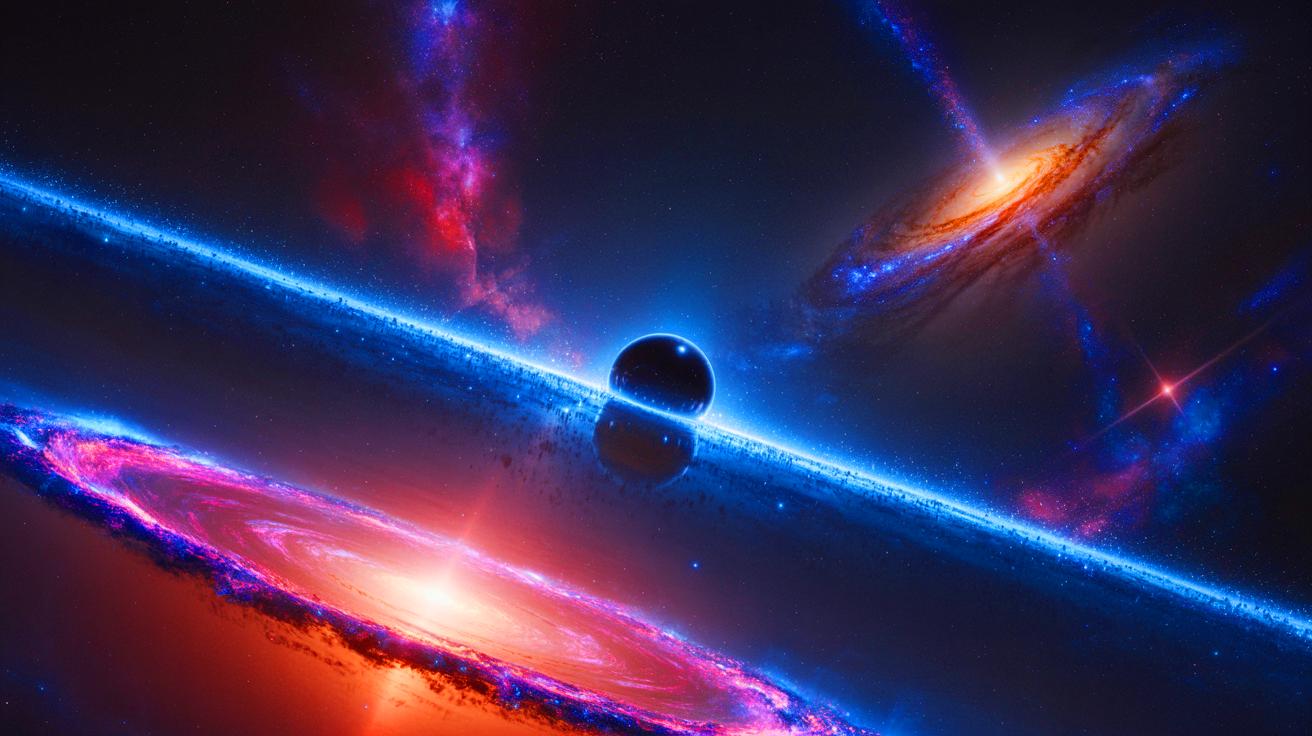- 🔍 Scientists propose two new theories that may explain the origins of dark matter.
- 🌌 Theories include a potential “mirror world” and a cosmic horizon acting like a particle factory.
- 🧪 These theories offer testable predictions to challenge established dark matter models.
- 🔬 Researchers are shifting focus from particle detection to understanding creation processes.
Recent developments in theoretical physics are providing new avenues for understanding the mysterious substance known as dark matter, which makes up approximately 85% of the universe’s mass. Two novel approaches are gaining attention: one proposes a “mirror world” composed of twin particles, and the other suggests that the young universe’s expanding edge could have generated particles similar to a black hole horizon. Both theories offer testable predictions and challenge established models, enriching the ongoing quest to uncover the origins of dark matter.
The Puzzle of Dark Matter
For decades, scientists have been puzzled by evidence of dark matter. Galaxies rotate faster than their visible mass should allow, and galaxy clusters bend light more than expected. These anomalies suggest a hidden mass that does not emit, absorb, or reflect light, making it invisible and detectable only through gravitational effects. Current estimates indicate that around 85% of the universe’s matter is dark, cold, and slow-moving on cosmic scales.
Despite numerous experiments, the most popular dark matter candidates have remained elusive. This lack of detection has pushed theorists to explore new ideas. Physicist Stefano Profumo from the University of California, Santa Cruz, observes that the speculative nature of these new theories offers fresh perspectives that do not rely on conventional particle dark matter models, which face increasing pressure from null experimental results.
Two New Theories Emerge
The first theory, recently published in the journal arXiv, envisions a mirror sector—a duplicate realm of known particles and forces that interacts weakly with our own. In this hidden world, a version of the strong force could bind “dark quarks” into heavy “dark baryons.” During the early universe, these baryons might have collapsed into tiny, stable relics akin to miniature black holes. If formed in the right quantities, they could explain the universe’s missing mass while remaining undetectable by current instruments.
The second theory, detailed in the journal Physical Review D, suggests that the expanding horizon of the early universe served as a particle factory. After inflation, the cosmos may have experienced a brief period of accelerated expansion. During this phase, the cosmic horizon would have had a temperature and emitted particles, much like a black hole. If stable particles were created this way, they could constitute dark matter across a wide range of masses.
Testing the Mirror World Hypothesis
The mirror world theory has been around for years, but recent studies have sharpened its potential explanations for dark matter’s abundance. The theory posits two main possibilities: mirror electrons or mirror baryons as dark matter candidates. Both scenarios predict the existence of a “mirror photon” with a mass in the million-electron-volt range, which could explain the smoothness of small galaxies without conflicting with large-scale structures.
Future cosmic background surveys could potentially detect this model’s predicted small but measurable extra amount of early-universe radiation. Additionally, better mapping of stars in small galaxies could reveal self-interacting dark matter changes, supporting or refuting the mirror world hypothesis. Observations of the cosmic microwave background could also identify any extra radiation from the mirror world.
The Horizon of Creation Theory
Profumo’s second proposal offers a simpler setup. It imagines the universe just after inflation in a nearly steady expansion phase. In this state, the cosmic horizon acts like a hot surface, generating particles through quantum effects. If these particles are stable and interact only through gravity, they could persist as dark matter today. The final amount depends on conditions during this phase and the temperature when normal expansion resumed.
By measuring certain features of the early universe, scientists could narrow down the possible mass of this type of dark matter. Gravitational waves or small deviations in early expansion could indicate a brief accelerated phase, providing further evidence for this theory. Understanding the temperature at the end of this phase would help constrain the mass range for the dark matter particles.
As scientists continue to explore these bold theories, they open new pathways for discovering dark matter. Instead of solely focusing on particle detection in laboratories, researchers are now looking to galaxy surveys, cosmic background maps, and gravitational wave detectors for clues. These approaches reflect a broader shift in thinking, moving from identifying specific particles to understanding the processes that may have created them. Will these innovative theories lead to a breakthrough in our understanding of the universe’s hidden mass?
This article is based on verified sources and supported by editorial technologies.
Did you like it? 4.4/5 (25)
